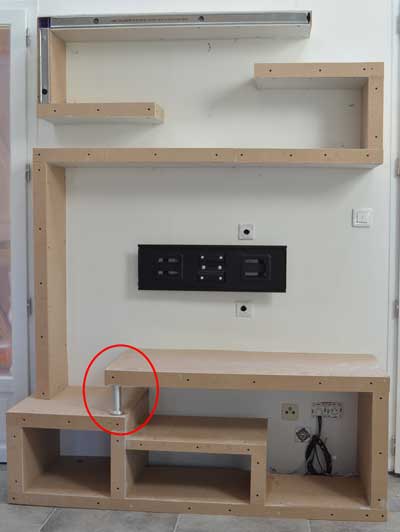
The edges of MDF can be a little tricky to paint because the end grain will keep coming through the paint and will be visible even after sanding and painting a few coats of primer and gloss. The only real difficulty that arises when painting MDF is what to do about the edges , which are more porous than the surface — similar to the end grain of lumber — and drink in most of the finish. I’m sharing how to paint MDF and get smooth edges. MDF is made of compressed wood fibers, wax and resin.

I currently use Kilz oil based primer spray paint followed up with various brands of spray paint for a finish coat. I sanded the raw edges first with 2grit, then down to 4grit. I find sealing the wood after sanding is the number one thing to do prior to painting. How to seal MDF edges for painting. If you have ever built a cabinet, counter, bench, or table out of medium density fibreboard and then tried to paint it, you probably.
To prevent frustration when finishing displays or items built from MDF you should seal the edges and the wood surfaces before applying acrylic (water based) paint coatings. Sand your edges really well, put the sizing on and let it dry then lightly sand and add another coat and let dry and sand again. You should now be ready to finish.
I sealed the MDF on the project below using this process and it is MDF. I have used it to harden the edges and make them more robust. If this is your first visit,. The building of a project with MDF is easy. I use MDF all the time for fabrication and a relatively cheap method is to seal the edges with thinned white glue.
Finishing will take the most time. It soaks into the pores but dries clear and provides a good paint surface. Hi Jon I have tried all types of methods to get MDF edges smooth including the PVA idea. The method I have found which works best is to simply use a two part woodfiller onto the edges and then sand down with 1grade paper.
By going the extra mile on the edges you will stop the MDF acting like a sponge and it is the edges that will let the side down and be the first part to allow the ingress of water. If you attempt to apply paint to the raw cut edge of MDF , regardless how good the saw cut or router cut is you will be painting for ever and a day and you will still. It seems like no matter how smooth a routed or sanded edge is before painting it always seems to look and feel a bit rough or “fuzzy” after the final finish coat is applied. Pre-glued edging can be used with a hot air edgebander or is simply ironed on to your MDF edge with a normal iron on a medium setting.
Once the edging has adhered to the edge the excess is trimmed and any rough edges lightly sande it is then ready for painting or spray painting. In this short video, I test three different options for sealing MDF edges before painting. Sealing, varnishing and finishing MDF.
One is closer to cement, takes minutes to dry, does not sand very well, and is tolerant of humidity. Shellac is also a good choice for sealing the edges of MDF. When it dries, it creates a very hard layer, so it will protect the edges of your MDF.
You can also seal the edges using a normal oil based primer. Rusty is right, there really is no end grain per se, but any cut or routed edges really do soak up the primer more than intact factory surfaces. The cut edges of the MDF should be sanded with progressively finer grits of sandpaper to smooth and polish the edges.
But I would not sand the face of the unpainted MDF , it is layered with a paper that can be easily scarred with sandpaper. MDF cut edges and finish them as good as the finished edge ? They will be finished in a water based paint. The biggest obstacle to painting MDF is how easily it absorbs water, especially along the edges. To paint MDF , you should prime the board before painting , use the proper tools to apply the paint and apply two coats of paint. Advantages of MDF MDF is an ideal wood to use for many interior home furnishings such as cabinetry because it is more stable and cheaper than hardwood.
Spread a thin coat of spackling compound onto the edges and sand smooth before painting. Spot-fill any defects on the face of the MDF as well. The result will be ultra-smooth edges and faces on painted MDF.
Sources 3M SandBlaster sanding sponges. Profile Edge sander, which sands and seals MDF edges in one pass. Sanding is achieved using our special ST Wheels. When run at the correct spee these sand and seal the MDF edges. Position edge band so it extends a bit beyond each face of the plywood.
Glue to the edge and either clamp or pin it with a brad gun. Once the glue dries, sand the edges flush with the face of the ply. Break (slightly round off) the outside edges of the solid wood to give it a finished look before painting.
No comments:
Post a Comment
Note: Only a member of this blog may post a comment.